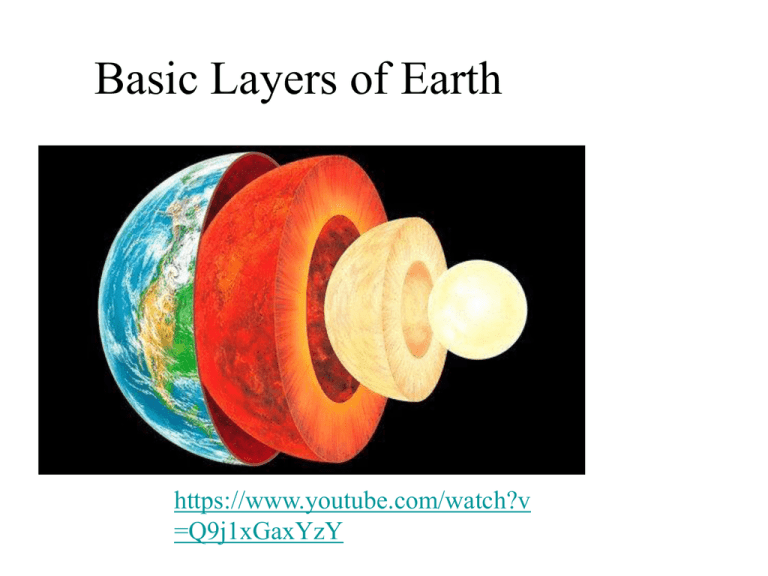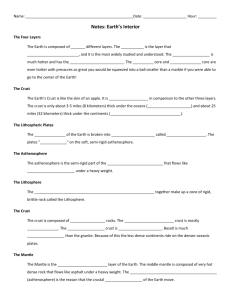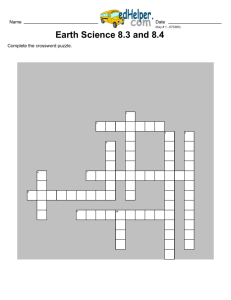
Basic Layers of Earth
https://www.youtube.com/watch?v
=Q9j1xGaxYzY
How Is The Earth Layered?
1. Chemical Composition
a. What it is MADE of
b. Different Elements
2. Physical/Mechanical Properties
a. What it DOES
b. Consistency and texture
DENSITY is the Key!
• Elements have different densities
– Golf ball vs. Ping Pong ball
– Amount of matter in an object
• Earth’s gravity sucks in dense elements!
– Which layer is the most dense?
– Which layer is the least dense?
• The less dense compounds make up the
crust and the mantle, and the dense
compounds make up the core.
The Four Layers
The Earth is composed of four
different layers. The crust is
the layer that you live on, and
it is the most widely studied
and understood. The mantle
is much hotter and has the
ability to flow. The outer
core and inner core are
even hotter with pressures so
great you would be squeezed
into a ball smaller than a
marble if you were able to go
to the center of the Earth!
The Crust
The crust is composed of two rocks. The continental
crust is mostly granite. The oceanic crust is basalt.
Basalt is much denser than the granite. Because of this
the less dense continents ride on the denser oceanic
plates.
The Mantle
The Mantle is the
largest layer of the Earth.
The middle mantle is
composed of very hot
dense rock that flows like
asphalt under a heavy
weight. The movement of
the middle mantle
(asthenosphere) is the
reason that the crustal
plates of the Earth move.
The Lithosphere
The crust and the upper layer of the
mantle together make up a zone of rigid,
brittle rock that breaks easily called the
Lithosphere.
The Lithospheric Plates
The crust of the Earth is broken into many pieces called
plates. The plates "float" on the soft, semi-rigid
asthenosphere.
Asthenosphere
• Upper/Mid-Mantle
• Plastic
• Solid that flows
The Asthenosphere
The asthenosphere
is the semi-rigid
part of the middle
mantle that flows
like hot asphalt
under a heavy
weight.
Convection Currents
The middle mantle "flows"
because of convection
currents. Convection
currents are caused by the
very hot material at the
deepest part of the mantle
rising, then cooling and
sinking again --repeating
this cycle over and over.
Tectonic Plate Motion
Convection Currents
The next time you heat anything like
soup or water in a pan you can watch
the convection currents move in
the liquid. When the convection
currents flow in the asthenosphere
they also move the crust. The crust
gets a free ride with these currents,
like the cork in this illustration.
Safety Caution: Don’t get your face
too close to the boiling water!
Mesosphere
• Lower Mantle
• Strong
• Solid
The Outer Core
Refer back to
paragraph 4 in close
reading.
The Inner Core
Refer back to close
reading paragraph 5.
The Layers of the Earth
© Copyright 2006. M. J. Krech. All rights reserved.
Summative Activity
• Using your notes, your close reading, and
foldable. Write a summary for each layer as
if you were describing each layer to your
little brother or little sister. Describing the
chemical and physical features of each.








